176
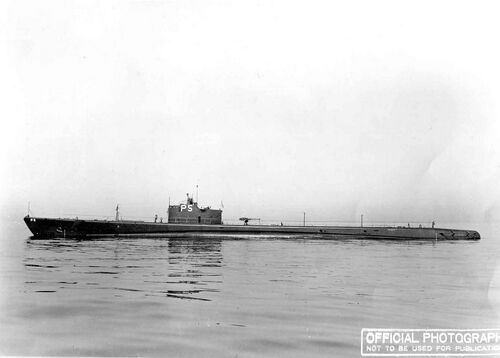
U.S. Navy photo

Perch at speed while on trials, fall of 1936. These boats had all-electric drive, meaning that the four diesel engines drove only electrical generators and were not connected to the propeller shafts. Powerful electrical motors turned the shafts. The technology was still fairly immature in 1936, and initially these boats suffered from flashover on the main motors and the loss of 360 hp across the drive train. These problems were largely corrected by 1938 with rapidly improving electrical technology.
Photo in the private collection of Ric Hedman.
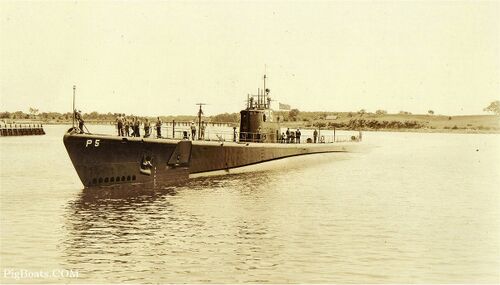
Perch idling up to moor at Portsmouth Navy Yard, Kittery, ME. in June 1937. Shapleigh Island is in the background. There is a cluster of her crew on the forward deck, coiled heaving lines in their hands, ready to throw them to waiting hands on the pier so that the heavy mooring lines can be pulled across.
The man at the tip of the bow has the Union Jack at the ready to raise when the first line goes over. Many things happen once the actual mooring begins. The line is tossed and made fast. The ship's whistle blows and the Jack is raised and the "colors are shifted" meaning the underway flag on the bridge structure (note flag in photo) is lowered just as the in-port colors are raised on the flag staff on the stern. A man can be seen there at the ready to raise that flag.
An officer is standing just aft of the mast forward of the conning tower fairwater. He would be in charge of the men on deck. At the aft end of the fairwater there appear to be several civilians, their purpose unknown. They might be Electric Boat technicians or employees of the Portsmouth yard.
U.S. Navy photo

Guantanamo! The location was taken from notations on the back of the photo. This was taken in Cuba at Naval Station Guantanamo Bay during a 1937 stopover.
Photo in the private collection of Ric Hedman.
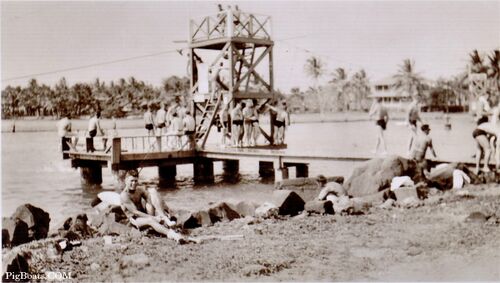
The crew of Perch taking advantage of the recreational facilities of the base at Guantanamo Bay during the 1937 port visit. The crew seemed to be having a good time using the "swimming hole" as noted on the photo's back.
Photo in the private collection of Ric Hedman.
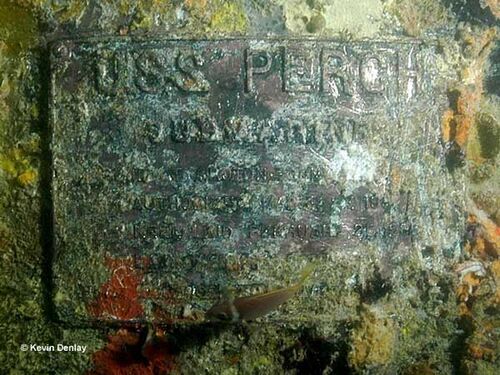
Perch was lost in a battle with Japanese destroyers on March 3, 1942. The location is in the Java Sea north of the island of Java. Heavily damaged in a depth charge attack, the crew was able to get her to the surface, but were forced by approaching enemy ships to abandon ship and allow her to sink. All 59 of her crew survived the sinking and were captured by the Japanese. They spent the rest of the war in prison camps. Unfortunately, five men died in the camps from malnutrition and disease. An official report concerning her loss is summarized at this link. The Perch's wreck was discovered in 2006 by a civilian dive team. They thoroughly surveyed and photographed the wreck, but left it undisturbed. This photo shows her builder's plaque still affixed to the conning tower fairwater. This was an extremely rare occurrence, as it was standard procedure to remove the plaque and stow it below prior to going on patrol.
In recent years, it has been found that the wreck of the Perch has been completely destroyed by Chinese sponsored scrap metal pirates. Recent surveys have shown that nothing is left of her wreck, it has been completely salvaged. These same illegal and immoral scrap mongers have destroyed most of the WW II era shipwrecks in the Java Sea, desecrating the grave sites of numerous American, British, and Dutch sailors.
Photo courtesy of the On Eternal Patrol website.
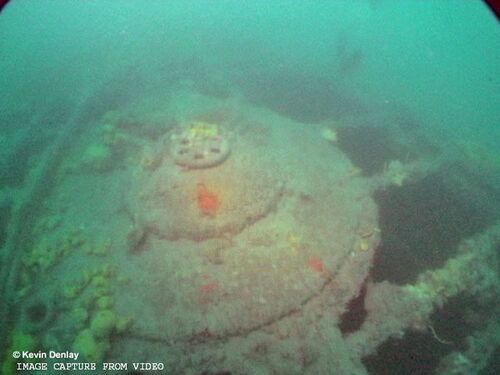
The torpedo room access hatch on the Perch's wreck in the Java Sea in 2006. Visibility at the wreck site was only 5 to 15 feet, so a good overall view was not possible. The On Eternal Patrol website has a complete photo collection.
Photo courtesy of the On Eternal Patrol website.
Page created by:
Ric Hedman & David Johnston
1999 - 2023 - PigBoats.COM©
Mountlake Terrace, WA, Norfolk, VA
webmaster at pigboats dot com
